Montbouy – Châtillion-Coligny – Dammarie-sur-Loing – Étang-de-la Gazzone – Ouzouer-sur-Trézée – Briare
Leaving Montargis we were now on the second of the canals on the Bourbonnais route. It actually starts just a little before Montargis at the junction with the now-closed Canal d’Orléans.

Montbouy
We had planned to have a few days cruising with Gina and Geoff and perhaps get to Briare but things did not get off to an auspicious start.
It was raining heavily across much of central France and a very wet éclusier suggested that if we had to move, do so early. Our next stop was to be the small town of Châtillon-Coligny and in very wet weather, we set off for the 6 km, 2 locks and 2 hour cruise.
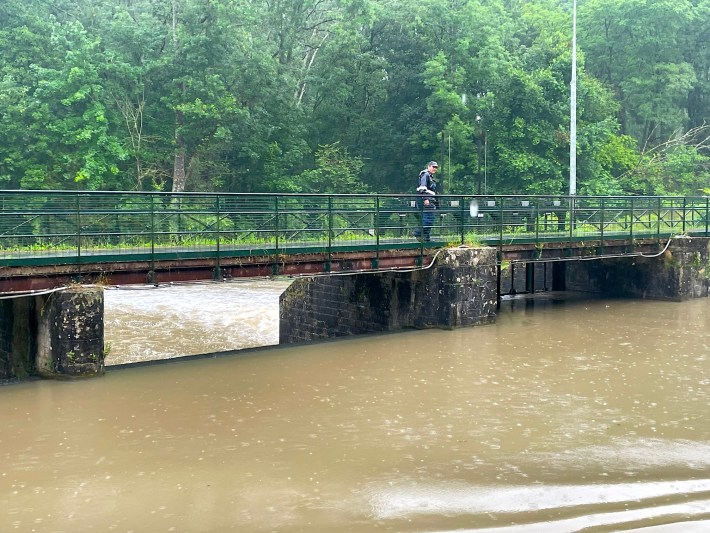
Châtillon-Coligny
This turned out to be the full extent of Gina and Geoff’s cruising experience with us on Catharina Elisabeth this year as the Briare Canal became closed to all movement just after we joined it. There was to be no cruising for the next four days (the remainder of their visit) because the flooding meant that all the locks were being set to varying degrees of openness and used to move water down the canal. The flow was incredible (canals are not supposed to have flow), so much so that we referred to it as the ‘River Briare’. Until the top areas drained, no one could cruise this section.
Fortunately, Châtillon-Coligny had some interesting activities and the weather improved to the point where we could engage in local activities.
It is the home of the famous family of scientists and intellectuals – the Becquerels. Henri Becquerel, who won a Nobel prize and gave his name to the unit of radioactive disintegration, is well-known to both of us. He was the third in four generations of famous Becquerels, the first of which, Antoine Césare Becquerel (1788-1878), grandfather to Henri, was born in Châtillon-Coligny.
The 21st of June is the Fête de la Musique across all of France where, on the longest day, each town is encouraged to celebrate, in the form of musical events. We have experienced this once before, some years ago, in Auxerre. We were delighted to find we had arrived in a place large enough to put on a show. We walked back into town after dinner and found a table in one of the town squares, and with wine and beer in hand, we settled in to enjoy the festivities.
It began with a French folk group
which, after only a few songs was somewhat abruptly interrupted to the obvious chagrin of the lead singer by an orchestral performance.
We also watched a traditional dancing performance.
On the way back, we were treated to an uplifting ‘arc en ciel’.
The next day the weather was still good
and we had a visit from Lon and Pat from C.A.R.I.B. III who were also marooned, but a few km upstream, and they had cycled back to see us. We all set off for the local museum which, for a small town, was exceptionally good. There was general historical material related to the artworks
and artisanal furniture
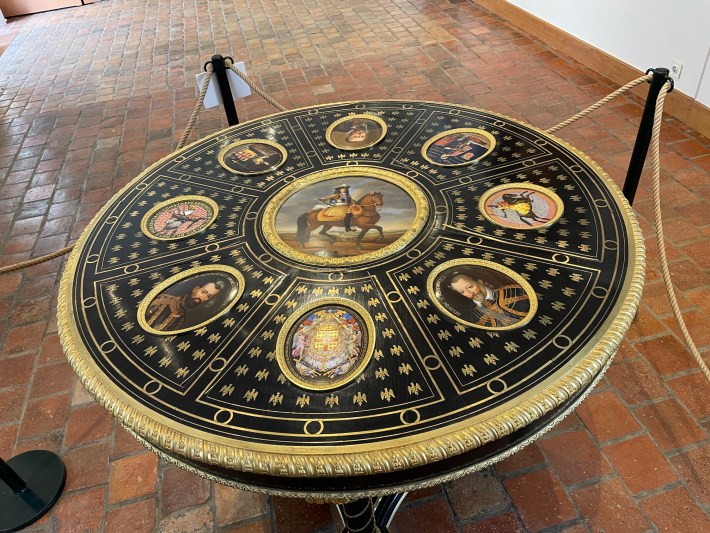
One room was devoted to Collette (one of the most famous writers in France who spent her childhood in Châtillon-Coligny)
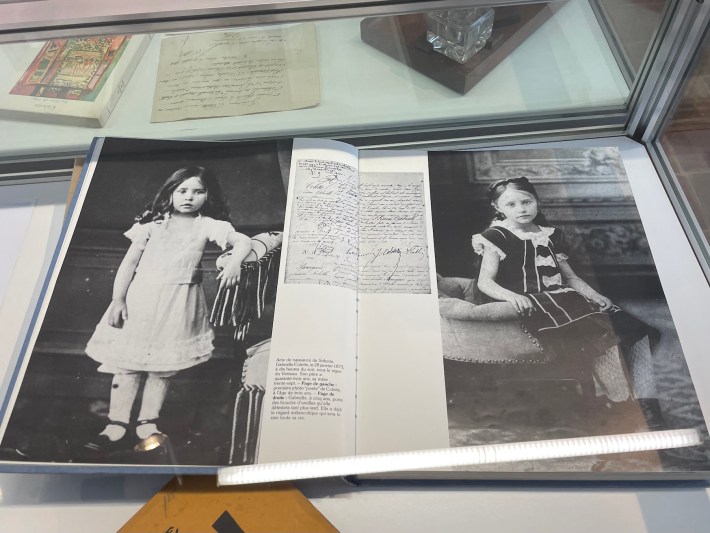
and another to the scientific achievements of the Becquerels.


Lisette also visited a quaint little shop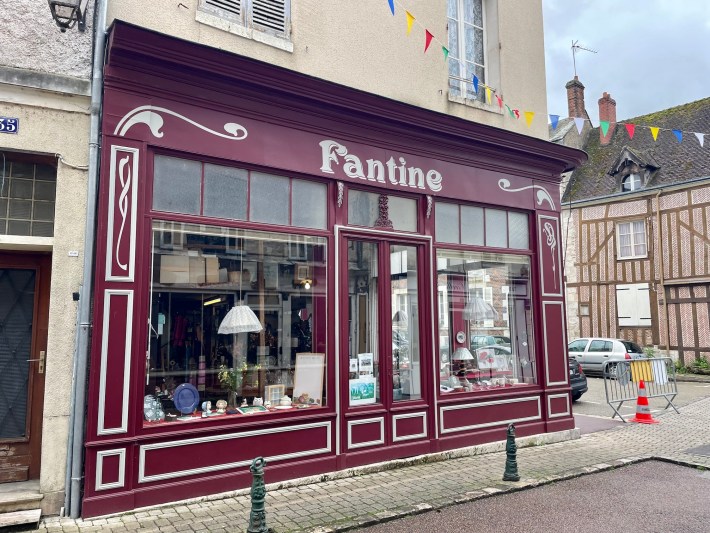
and bought a gift for her sister – wrapped so as not to spoil the surprise.
The next day, still marooned, Gina and Geoff were taken by kind locals to pick up their car from Montbouy and on the Sunday we all set off in the car for a trip into Briare. They were not going to make it by barge. While there we walked along the flooded river Loire to look at the Pont Canal du Briare which we intended to cruise across on Catharina in a few days.
It’s the longest canal bridge in France 662 m long, built between 1890-1896 by Gustav Eiffel’s company.
It was built to connect the Canal du Briare directly to the Canal Latéral à la Loire. In earlier times it required a time-consuming, difficult and sometimes dangerous trip across the river Loire.
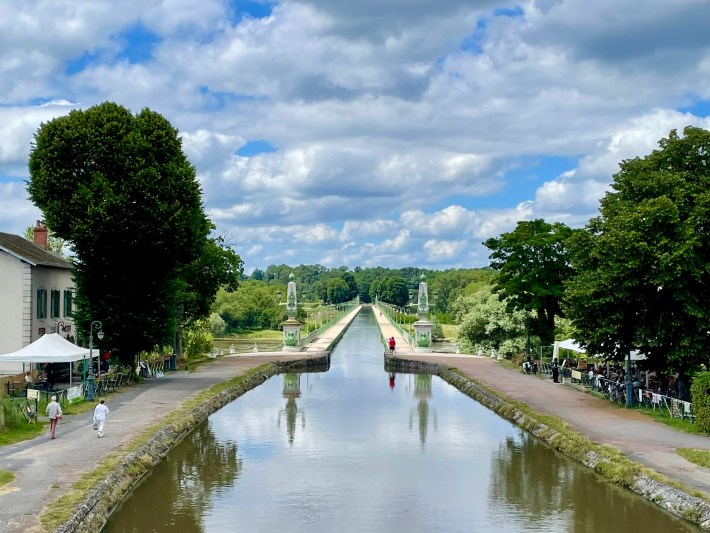
We also paid a leisurely visit to the Musée des Deux Marines et Pont Canal which comprehensively covers the history, use and environment of the town of Briare and how it became the pivot point in the connection of the Briare and Loire canals via the bridge across the Loire.

We had visited this museum briefly in 2016 at the DBA rally but we spent a good deal more time here on this occasion.
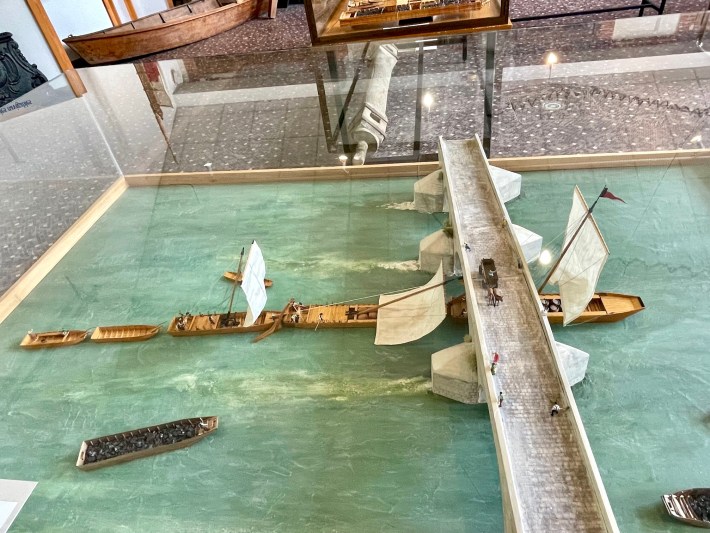

The next day it was time for Gina and Geoff to leave us. We really enjoyed their visit and they had taken the change in plans with good humour and flexibility.
Dammarie-sur-Loing
The following morning we were given permission to travel again and did not need telling twice. We understood a hotel barge was booked to occupy our spot later that day. Happy to make room for it. We had a short cruise to Dammarie-sur-Loing because we wanted to visit another icon of the Canal de Briare, the seven ancient écluses, by bike rather than mooring in the town which is both difficult and had little to offer.
So after passing through the next series of locks, we moored up and took the bikes off to cycle along the towpath to Rogny-les-Sept-Écluses. A lovely ride of about 4 km, following alongside the canal and passing the locks we would go through the next day. There was one unexpected encounter with a snake that was making its way from the undergrowth across the path in front of our bikes. We hauled on the brakes, it tucked its head back out of the way of the tyres, and the three of us continued on our respective ways.
Briefly, when the Briare Canal was first constructed, this section required quite a big climb and seven locks were built in sequence.
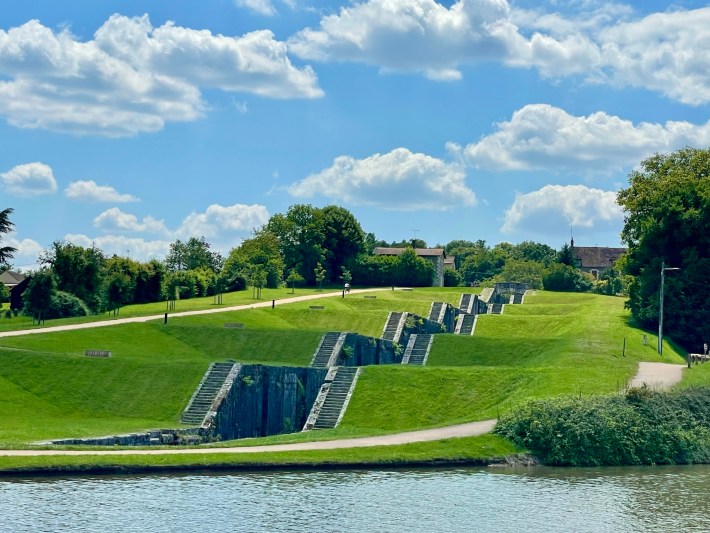
They did the job but it was a lengthy and inefficient process to get barges up and down as only one could pass at any time. At that time the canal was very busy. Eventually, larger and separate locks were built and these fell into disuse. They are now preserved as a historic monument.
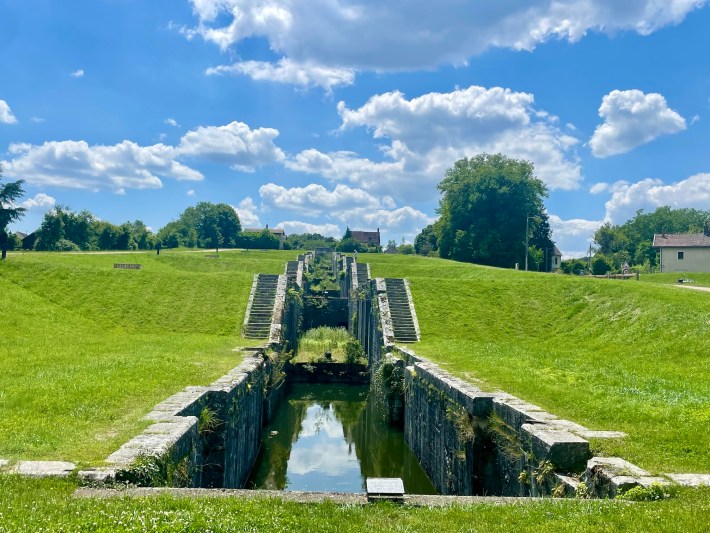
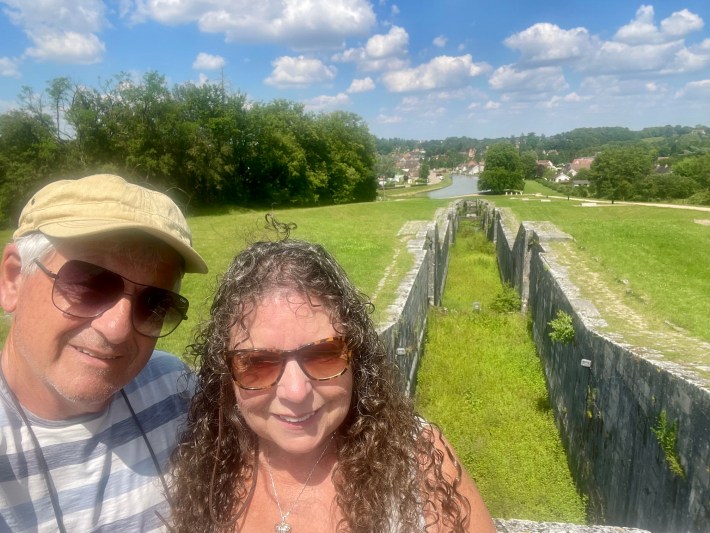
Lon and Pat (our scouts) had told us about a pretty church up a steep hill that was worth a visit
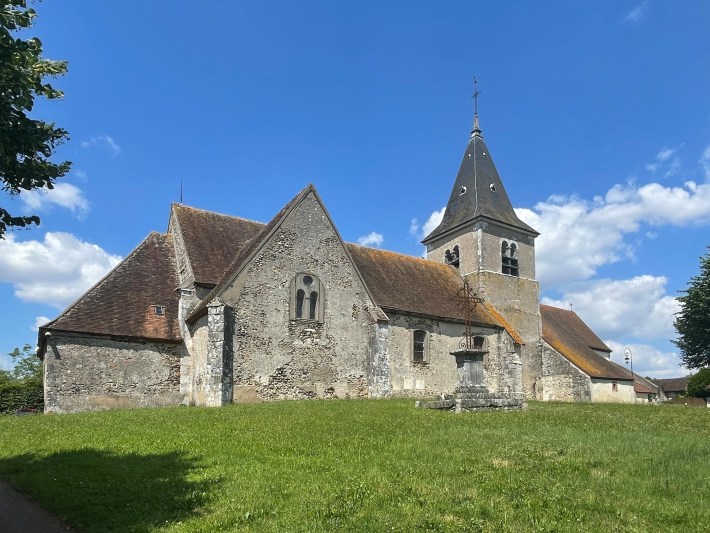
and that the key to the church was provided by an old lady who lives across from it. Up we went and sure enough, she popped open the window and hailed us. We (well Lisette) had a long chat with her about the town, the church and her life during the war
after which she handed us the key to this charming but somewhat frail church and a set of notes in English. We were told to lift the carpet to see the graves of two of the priests, buried beneath the stone floor.

She also cautioned us not to go back down the hill the same way we came up as she said it was “too steep”, but advised us to take a longer route out of town that had a somewhat gentler descent. We would have been fine going back down but felt we had to take her proposed route as she was still watching us depart from her window.
We had the most wonderful surprise when we returned to Catharina. Two boats were now moored behind us and a couple seated at a nearby park bench hailed us as we arrived, “Are you Aussies – we are too”. Quickly we determined that it was Guy and Chantal with whom we had cruised for several days in 2019 on the Canal du Nivernais (including the soul-destroying section from the top down to Châtillon-en-Bazois). They are an adventurous couple who left France in their 20’s, took their family to Australia and had a life of citrus growing followed by owning a prestige winery in Margaret River and becoming Aussie citizens in the process. They returned to France after retiring and have been cruising ever since. We have had several very intense wine-drinking sessions with them over time and another ensued that night where we drank a 12-year-old delicious blended red from Pemberton.
They confided that the politics in France had drifted too far to the right and they were returning to their family (son and daughter still live in Australia) as soon as they could. More opportunities should present themselves in the future then! Meanwhile, they were heading in the opposite direction to us so we bade them farewell for the moment.
Étang-de-la-Gazonne
The next stop for us was a quiet, wild mooring next to the lock at Gazonne. This is next to the Étang (lake) de-la-Gazonne and provided another relaxing wild mooring.
Ouzouer-sur-Trézée
We just took it easy. The following day, our spotters on C.A.R.I.B. III reported that there was space for us at the next place we wanted to stop, so, with confidence we set off for Ouzouer-sur-Trézée. In the event, the arrival of a hotel boat forced us off our mooring (they always have priority) and so we ended up comfortably rafted up alongside Lon and Pat.
We shared a convivial if very basic meal with them at the pop-up bar next to the mooring and shared our thoughts on what we wanted to do next. They had already checked out Briare by bike so were heading straight through across the Pont. We intended to stay another day at Ouzouer-sur-Trézée and then also a couple of days in Briare. So, in the morning, Lon and Pat moved on ahead and we popped into the quayside, taking up their mooring.
We checked out the church and the town but otherwise took it easy.
In the afternoon, Mike on Maria finally caught up with us. They had been travelling a day or so behind us and we had taken on the role of scouting for them. We now had a chance to meet up with his wife Karen and, of course, had an enjoyable evening chatting. (And drinking. There is always some drinking.)
Briare
As we left Ouzouer-sur-Trézée we knew that our cruise on the Canal du Briare was coming to a close as the Canal latéral à la Loire starts at Cognardière a spot just a short distance north of Briare.

So we would soon be on the third of the four canals of the Bourbonnais route. When we reached Briare after the short 7 km journey, we moored wild, outside of the commercial port. Upstream of us was a boat festooned with solar panels and as soon as we arrived, out jumped the owner and his dog and came over to chat. Patrice turned out to be a very friendly, knowledgable and helpful neighbour who has been on the waterways of Europe for most of his life including a stint as the capitaine at Briare and in the Arsenal in Paris. Later on, we had drinks with him and Aussie friends, Cecilia and Greg. We had come across them several times over the years and one afternoon we popped over to their mooring inside the marina to see them on Vrouwe Catharina, and the next day they cycled over to us. Patrice joined us and we had a very pleasant afternoon.
The highlight of the stay in town was the Cathedral of Saint Etienne. A modern church built in the 1890s financed by the Bapterosses family who made their fortune from the ceramics industry in Briare. Jean-Félix Bapterosses (1813-1885) was a successful mechanical engineer who invented a machine that could press 500 buttons at the same time whereas the English, contestants at the time, created each button individually.
The reconstructed church features an extensive use of mosaic tiles which, at the time, was a major industry in Briare.
It is quite imposing
and as you approach, you can readily see the use of mosaic tiles.
Inside, it was a symphony of mosaics – Lisette took dozens of photos.
Our time on the Canal du Briare was ending. It has been very enjoyable – highlights, challenges, sharing with friends and easy, pleasant cruising.
On a somewhat overcast day, we set off to cross the famous Pont Canal du Briare and continue on our third canal of the four that make up the Bourbonnais route.

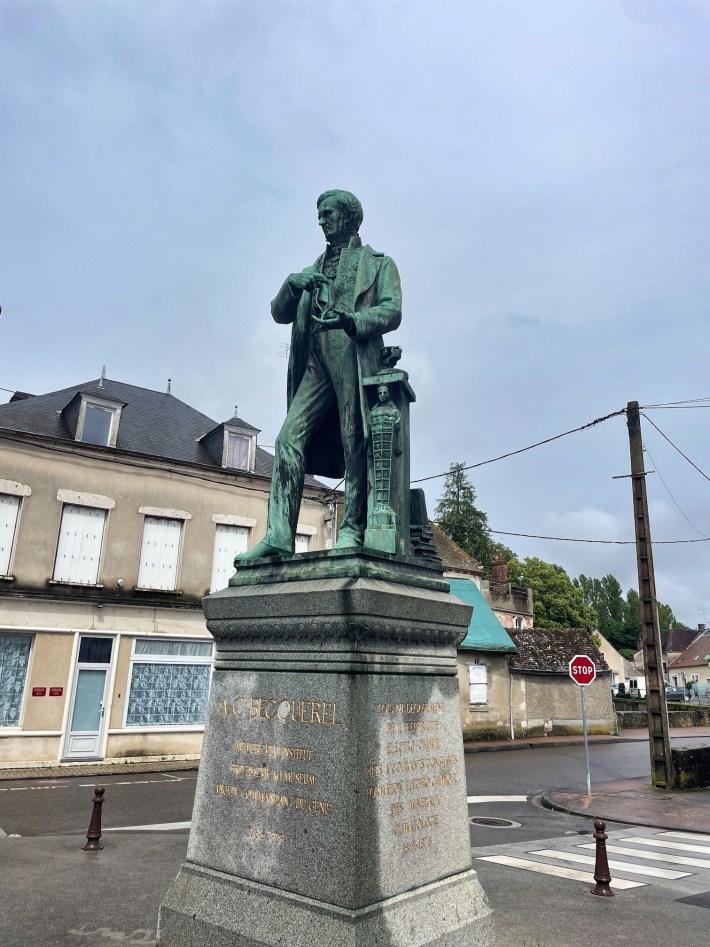


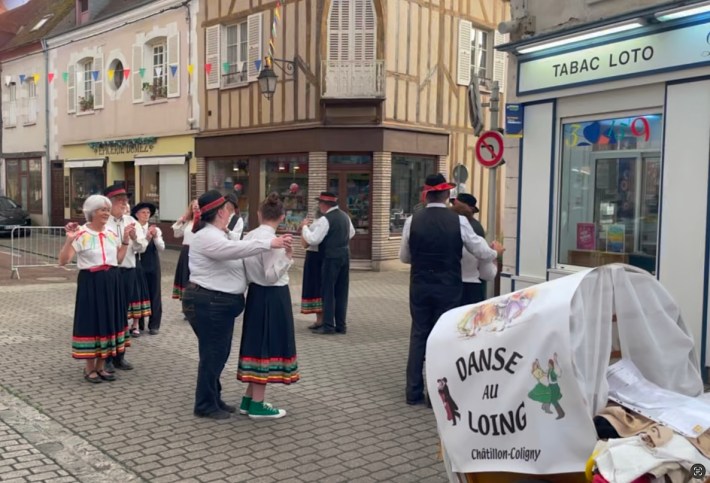
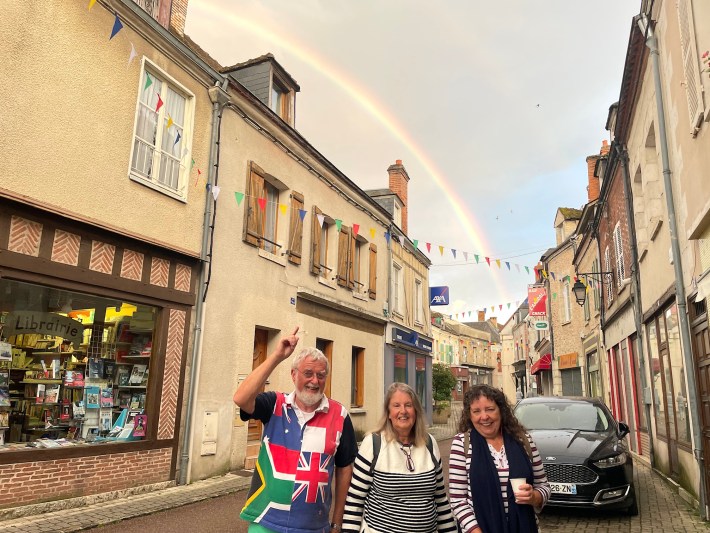

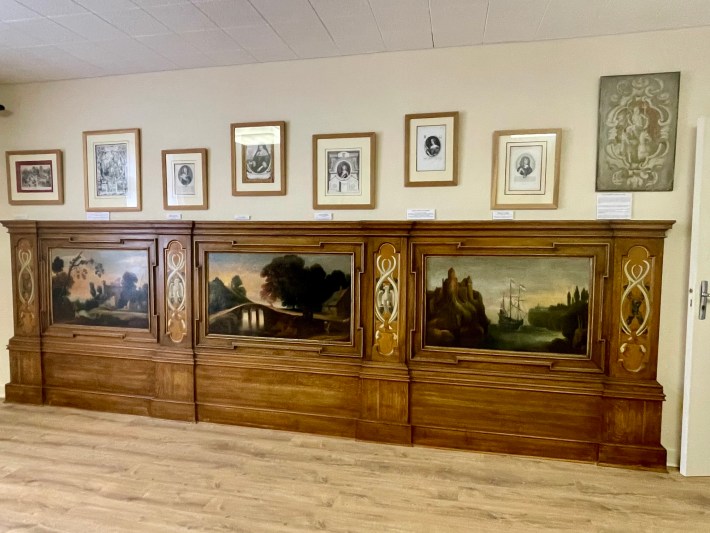

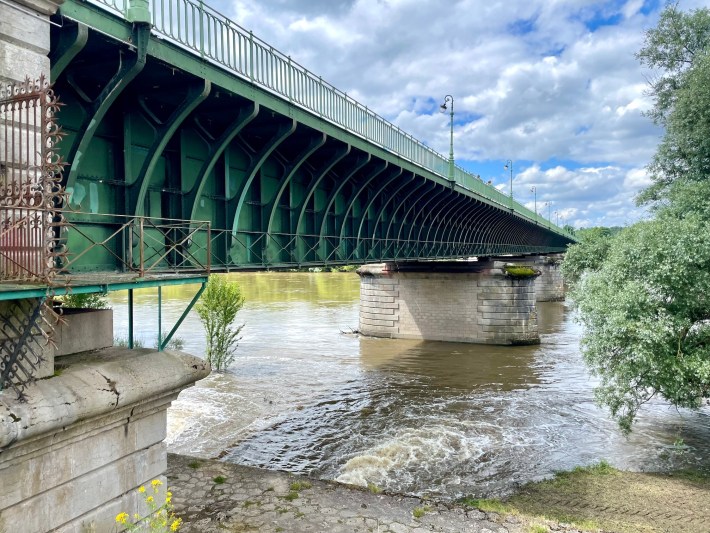
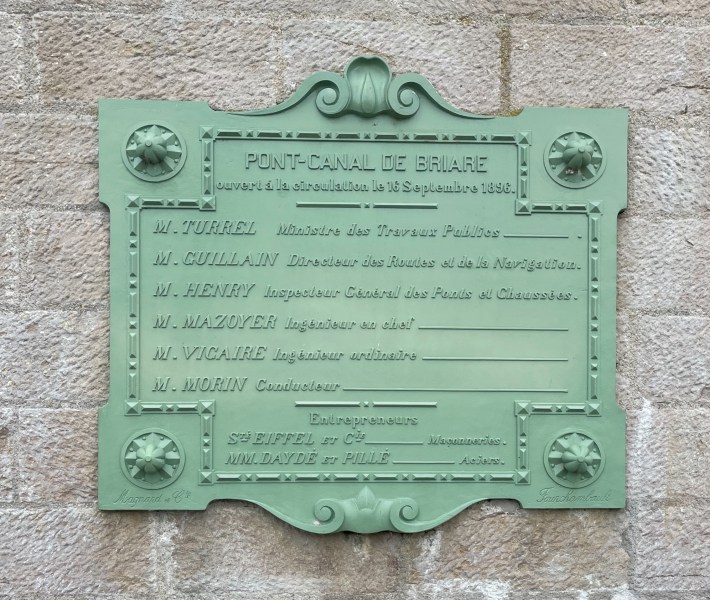
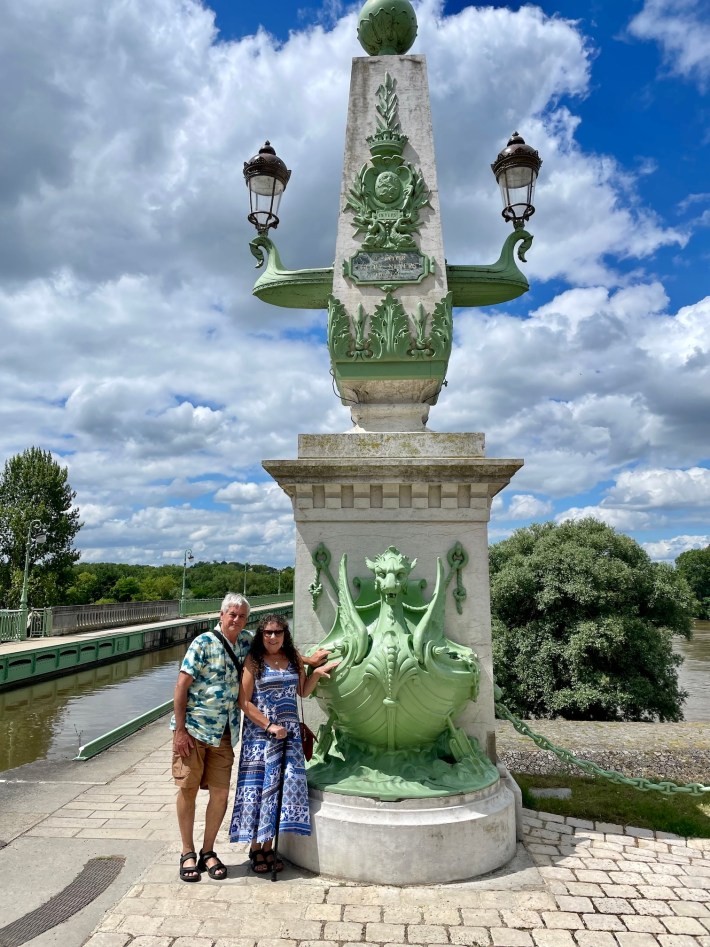


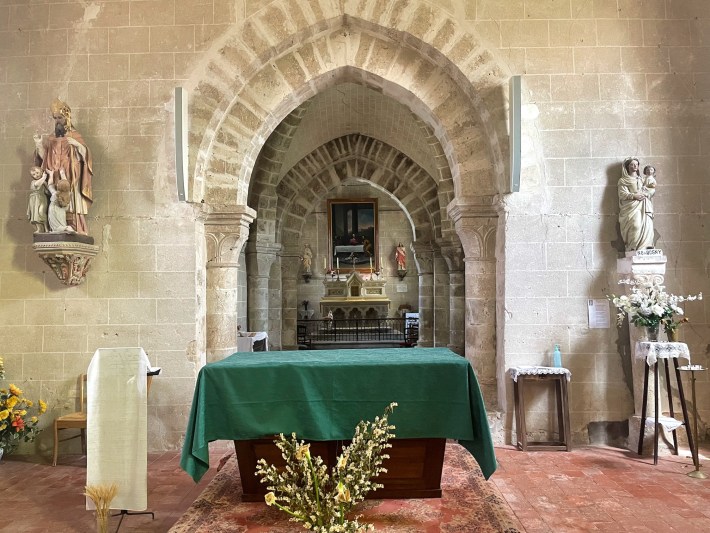
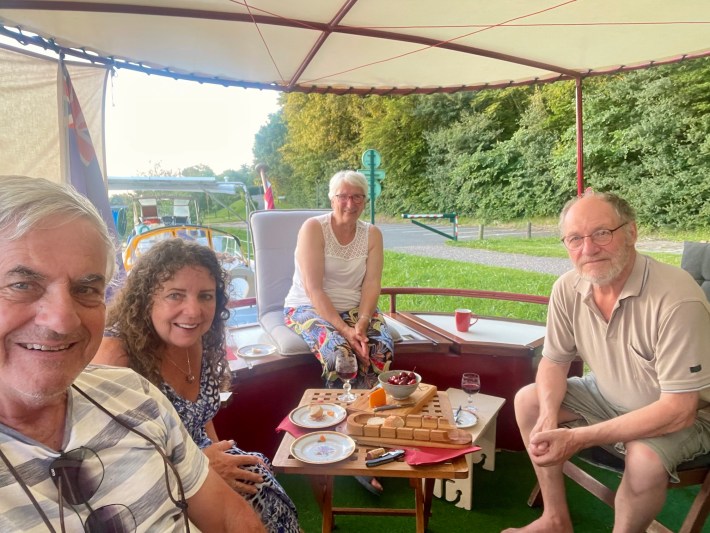


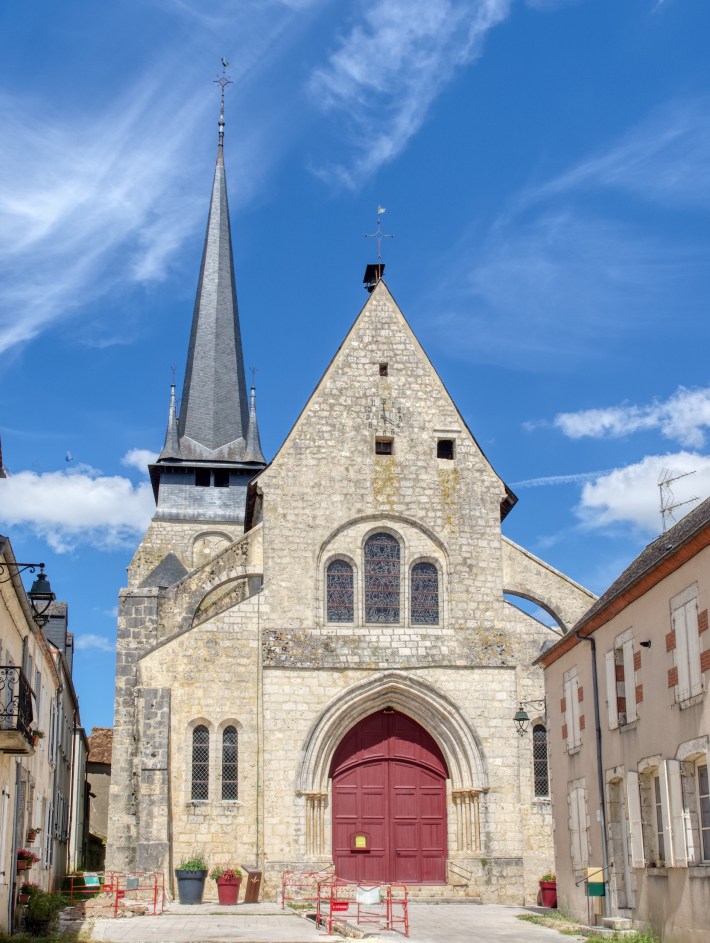



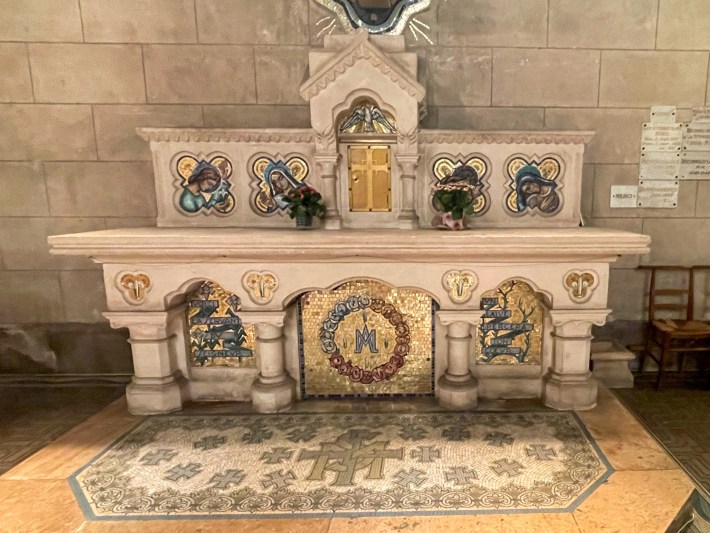
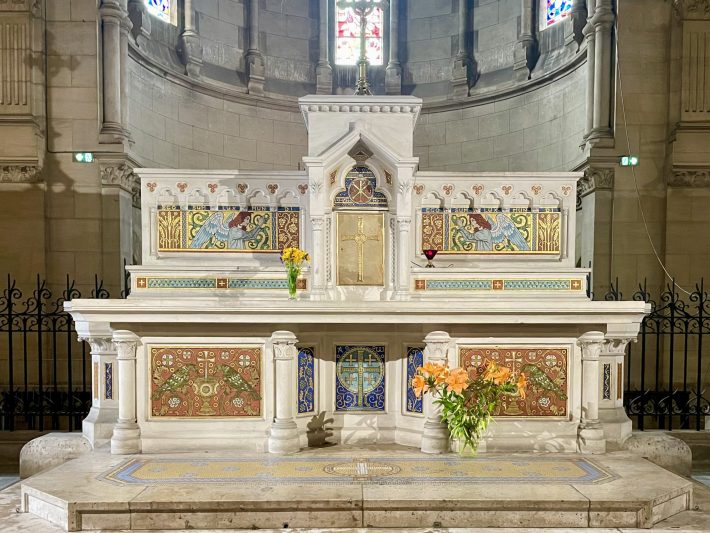
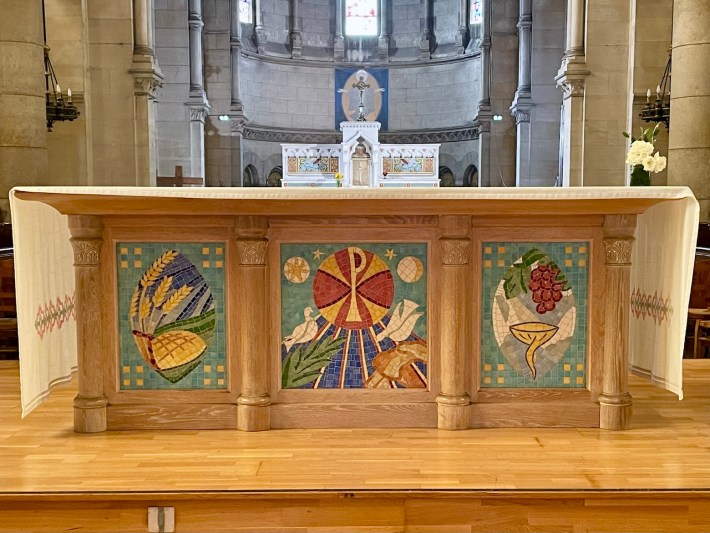

3 Responses
I am sure you are both having a fantastic time and the beautiful places and of course the scenery. Thank you so much for telling us all about your new cruising adventures and the new and old friends you have met on the way. You have enlightened me to places l have only heard about in books. What a great adventure that keeps on giving. Safe cruising see you down under soon.
We are constantly reminded of you Mary – each night we play cards with the set you bought us for our 40th anniversary. A can of confit duck is already put aside for you to come back with us.
Apologies for the late arrival here. We too have been away, so I haven’t been online very much. That said, I thoroughly enjoyed cruising on the Canal du Briare vicariously and seeing the sights through your lens. It looks lovely and I’d have liked to see that old staircase of disused locks as well. I’d forgotten that France had been so wet in June; we were too, but without canals that have currents. Looking forward to your next post, and if it occurs sooner, safe travels back to Australia.